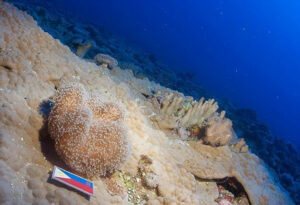THE Philippine Rise is a natural carbon sink that could contribute to climate-change mitigation, according to a study led by scientists from the World Maritime University, IRD in France, Technical University of Denmark, and the Gulf of Maine Research Institute and Blue Green Future.
The researchers said 50-year carbon sequestration rates are highest in the tropics, making the Philippines and the broader Coral Triangle region “significant in this global picture.”
Carbon sinks are reservoirs that store more carbon than they release. Natural carbon sinks include oceans, forests, and soil.
The researchers said 27% of carbon sequestration happens in Ecologically and Biologically Significant Areas, of which the Philippines has three.
In Southeast Asia, the Philippines has the most marine protected areas, where 7% of sequestration occurs, they added.
The study found that the ocean’s biological carbon pump (BCP), the natural process by which the ocean removes and stores carbon from the atmosphere, sequesters approximately 2.81 giga tons of carbon annually, equivalent to $1 trillion per year in climate-related economic value over 50 years.
The researchers valued the carbon storage provided by this ecosystem service at $545 billion per year in international waters and $383 billion per year within national exclusive economic zones, with the total value projected to exceed $2.2 trillion by 2030.
Despite its vital role in mitigating climate change, the BCP remains largely unprotected from human activities such as industrial fishing, pollution, and deep-sea mining, the study said.
“Sequestration time should be clearly stated and scientifically estimated to provide more transparency and confidence in investments in carbon sequestration projects,” lead author Fabio Berzaghi said.
The authors called for stronger conservation policy, enhanced financial incentives for lower-income countries, and increased international cooperation to protect carbon sinks.
“Strengthening protections and aligning ocean-based carbon storage with national and global frameworks will be key to enhancing climate adaptation while fostering sustainable economic growth,” according to Charina Lyn Amedo-Repollo, assistant professor and physical oceanographer at the Marine Science Institute – University of the Philippines Diliman. — Kyle Aristophere T. Atienza

